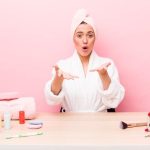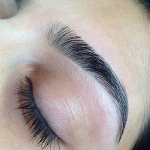When it comes to your body’s canvas, few things are as striking or as concerning as a loss of pigment in your skin. From the sun-kissed tan lines of summer to the stark contrast of vitiligo, changes in your skin’s hue are not just cosmetic but often a window into your internal health. In this article, we’ll explore the expanse of factors that lead to pigment loss, including genetic conditions, environmental factors, and even psychological stressors. The quest for understanding begins here, and with knowledge, comes the power to manage and approach skin health with confidence and clarity.
Understanding Skin Pigmentation

Melanin, a natural pigment produced by specialized cells called melanocytes, is the leading factor in defining the color of your skin. Its prime function is to protect against harmful ultraviolet radiation, and its production varies through genetic inheritance and environmental exposure that ultimately determines your skin tone. When melanin production is disrupted, either through internal defects or external harm, it can result in a loss or change in skin pigmentation. Various medical conditions and lifestyle factors can interfere with this delicate process, leading to noticeable effects on the skin’s appearance.
Common Conditions That Cause Pigment Loss

Vitiligo: The Patchy Loss of Skin Color
Perhaps the most visually striking and widely recognized condition involving pigment loss is vitiligo. It can appear at any stage in life, showcasing areas of the skin that have lost melanin entirely. Vitiligo can be an isolated occurrence or associated with other autoimmune conditions, and its unpredictable spread can be a source of psychosocial stress. Research suggests a complex interplay between genetics, the immune system, and possible environmental triggers, though the full etiology remains a puzzle to scientists and medical professionals alike.
Albinism: A Genetic Factor in Pigmentation
Albinism is a condition dictated by genetics, leading to a significant reduction or absence of melanin pigment. Individuals with albinism exhibit very light skin, hair, and eyes, and often experience sensitivity to light and a susceptibility to sun damage. While it’s a lifelong condition, understanding and managing albinism starts from birth, prioritizing skin protection and visual aids to mitigate its impacts.
Post-Inflammatory Hyperpigmentation and Depigmentation
Skin that has suffered from trauma, such as burns or acne, can react by either increasing or decreasing melanin production. Post-inflammatory hyperpigmentation occurs when dark spots remain after an injury heals, while depigmentation can leave white spots or patches. This hyperactivity or underactivity of melanocytes after injury can be distressing but is often temporary and treatable with targeted skincare and medical interventions.
Piebaldism and Other Rare Genetic Conditions
Though less common, a range of rare genetic conditions like piebaldism can result in a loss of pigment. Congenital conditions such as piebaldism manifest in distinctive patterns of unpigmented skin present from birth. Unlike vitiligo, these patterns do not change over time. The loss of pigment resulting from such genetic abnormalities often necessitates sun protection and can be associated with other health considerations.
External Factors and Environmental Causes
Sun Damage and Its Impact on Skin Cells
The sun’s ultraviolet rays are a double-edged sword; they help in vitamin D production while simultaneously posing a risk to our skin’s melanocytes. Excessive sun exposure can disrupt melanin production and lead to sunspots or, conversely, areas of depigmentation. Sun damage is cumulative, making protection like sunscreen and clothing essential, especially for those with pigmentary disorders, to prevent exacerbation and additional health risks.
Chemical Exposure and Contact Dermatitis
Everyday chemicals, from household cleaners to personal care products, can cause adverse reactions on the skin. Contact dermatitis, an inflammation elicited by irritants or allergens, can result in changes in pigmentation upon healing. Steering clear of known triggers and use of gentle skincare can be highly beneficial in preventing such chemical-induced pigmentary changes.
Hormonal Influences on Pigmentation
Our hormones can play a significant role in pigment production, with conditions such as melasma and Addison’s disease causing hyperpigmentation. Conversely, hormonal imbalances may also lead to hypopigmentation in some cases. Understanding the hormonal influences on your body’s melanin production can be crucial for prevention and treatment strategies.
Diagnosis and Treatment Options
Diagnosing skin pigmentation disorders typically involves a thorough examination that may include skin biopsies, blood tests, and imaging technologies. Identifying the core cause of pigment loss is integral to finding the right treatment path and managing the condition effectively.
Medical science offers an array of treatments for conditions causing loss of pigment. From topical agents intended to even out skin tone to advanced therapies like laser treatments, each case necessitates an approach tailored to the individual’s unique circumstances.
Lifestyle Changes and Home Remedies
Lifestyle adjustments can be both a preventive measure and a key to managing existing skin pigmentation issues. Protecting skin from sun exposure, avoiding known irritants, and nurturing the skin with a proper regimen can all contribute to skin health.
Here are notable lifestyle changes that can promote healthy skin pigmentation:
- Implement a daily sun protection routine, including broad-spectrum sunscreen and protective clothing.
- Maintain a skincare regimen with products appropriate for sensitive or condition-prone skin.
And for further insight, consider the following home remedies known to support skin health:
- Apply natural anti-inflammatory agents like aloe vera to soothe irritated skin.
- Include foods rich in antioxidants in your diet to protect against cell damage.
Conclusion
We’ve covered the intricate jigsaw puzzle that is skin pigmentation and the multitude of factors that can cause its alteration. While conditions like vitiligo and albinism stand at the forefront of pigment loss, environmental elements and personal health practices weave their way into the narrative. Armed with the right information and healthcare guidance, those experiencing changes in their skin color can tackle the situation head-on, mitigating risks and embarking on a journey to understand and embrace their unique beauty.
| Factor | Condition/Trigger | Typically Reversible? |
|---|---|---|
| Genetic | Vitiligo, Albinism, Piebaldism | No |
| Environmental | Sun Damage, Chemical Exposure | Sometimes |
| Inflammatory | Contact Dermatitis | Sometimes |
| Hormonal | Melasma, Addison’s Disease | Sometimes |
FAQs
Q1: Can loss of skin pigment be reversed?
A1: In some cases, such as those related to sun damage or inflammation, pigment loss can be reversible with proper treatment and care. However, conditions like vitiligo and albinism are currently considered to be irreversible, although treatments may help manage the appearance and reduce the impact.
Q2: Is loss of skin pigment always permanent?
A2: Not always. The permanence of pigment loss depends on the underlying cause. Some forms, such as those resulting from injuries or temporary inflammation, may not be permanent, while genetic conditions typically result in lasting changes.
Q3: What can increase the risk of developing conditions like vitiligo?
A3: Factors that may increase the risk of developing vitiligo include a family history of the condition, personal or family history of autoimmune diseases, and events that cause skin trauma, such as sunburns or cuts.
Q4: Are there any dietary changes that can help with skin pigmentation issues?
A4: There’s no specific diet to cure loss of skin pigment, but maintaining a balanced and nutritious diet can support overall skin health. Foods rich in vitamins and minerals, particularly antioxidants, can help protect the skin. It’s important to consult with a healthcare provider for personalized advice.
Q5: Can stress cause you to lose pigment in your skin?
A5: Stress by itself isn’t directly responsible for loss of pigment, but it can exacerbate conditions like vitiligo. Stress can impact the body in various ways, potentially triggering or worsening auto-immune responses that could lead to pigment loss.


